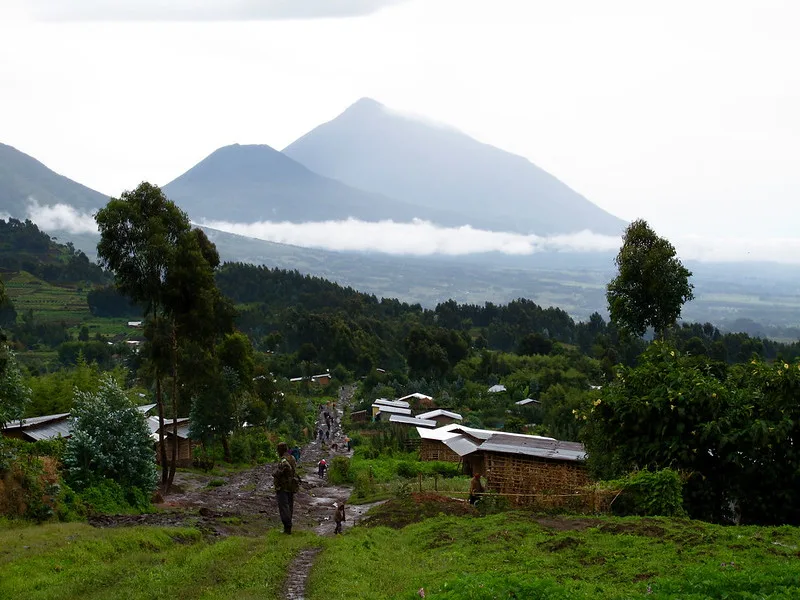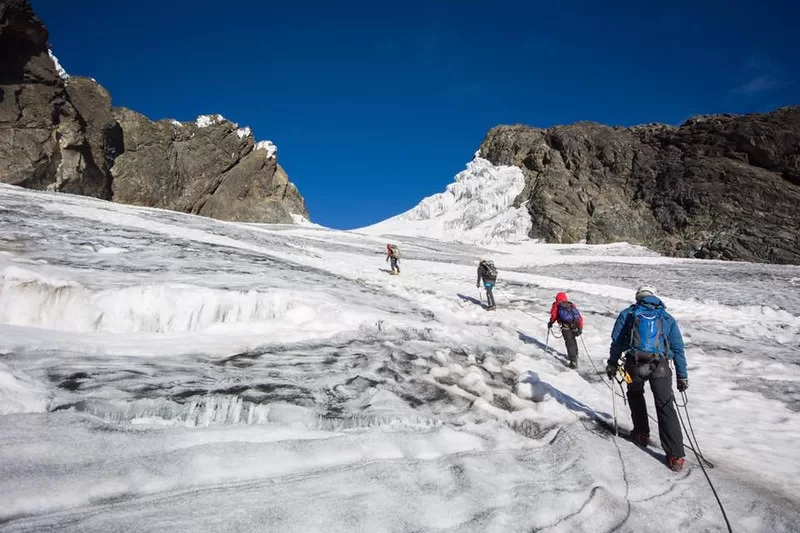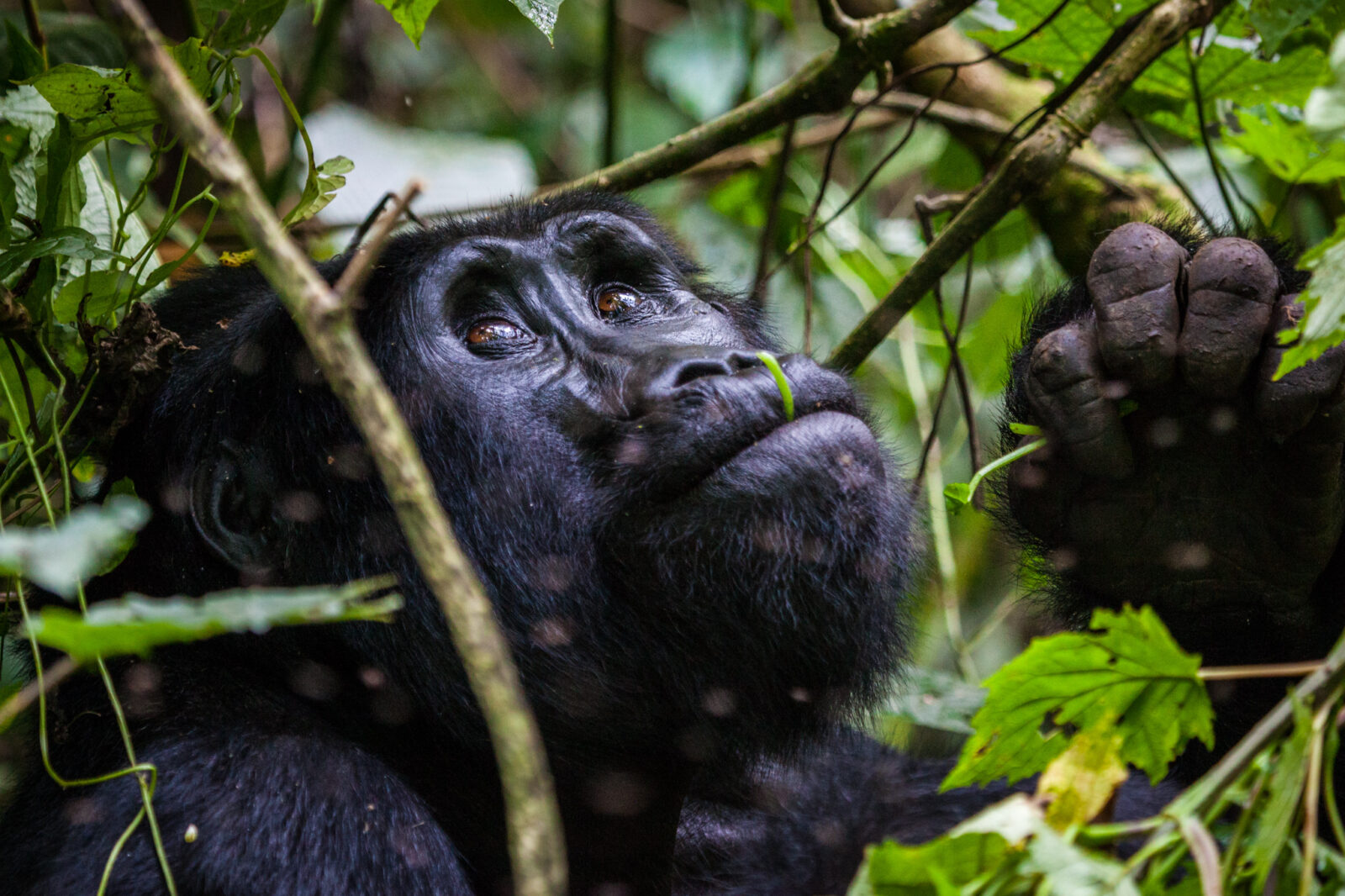Karisoke guides and researchers.
Twice she was able to climb a Hagenia tree and observe as the buffalo remained for an apparently endless period straight ahead before eventually slinking away. Others have not been so lucky; furious buffalo have caused injuries to Karisoke guides and researchers.
The lush wet meadows covering all saddle locations might help explain why this savanna denizen is so common in the high elevation Virunga rain forest. One thing is for sure: having Cape buffalo gives every trek through the forest some thrill.
Amy came practically dead back to camp one morning around seven. And he had just fled first hill, where she had abandoned group five late the day before. Rather of following a new gorilla path, however, she came onto a huge tangle of uprooted and twisted plants covering the whole eastern edge of the little crater.
Elephants!” Looking around, Amy soon saw a trunk swaying like a captivated snake over some little adjacent trees. A single eye then started to show. A swishing tail comes next. Amy saw just their sign for months, then she was surrounded by real elephants. She hurried to tell Bill, who had remained behind to labor in camp, the news.
We raced back up the hill together. Though young trees snapped all around us, we did not see any elephants. At last another trunk showed above some thick bushes and we understood we were now upwind of this alfactory periscope.

The jungle became quiet for a few minutes, and we decided to go higher ground. Just as we arrived on a little hill, all hell erupted thirty-seven times and even remembered to get a dozen photos. The pictures revealed a line of smaller heads, ears and tusks reminiscent to those of the low land forest elephant.
Later studies would show that the Virunga elephant was most likely a link between the races of the forest and savanna. At the moment, the herd roared by and we were given a kaleidoscope of fast-moving body parts that felt like an earth tremor. And a lifetime of remember.
Though Cape buffalo is somewhat common, not to mention elephants and leopards, our only injuries in the Virunga occurred from falls in the challenging terrain and on two rare events from the gorillas themselves. The first of these injuries happened when Amy happened to be in the wrong location at the wrong moment.
Late one day on the Southside of first Hill, Beethoven couched and hurried to drive Effie away from a luscious black berry bush. Amy had been seated with Effie noting things when the on-rushing Beethoven knocked her aside. Though her foot got stuck against the root of a tree stump and her knee bent as she slid awkwardly to the side, the push itself was benign.
Usually short, the contest included some shouts and maybe a bite before Effie left the scene. Amy staggered to her feet and immediately felt a stinging ache in her right leg with any weight. She so cyst a young hypericum to create a staff and shuffled slowly back to camp. Bill started looking for her as darkness fell and came across her as she neared camp creek. Luckily the knee recovered well, and Amy returned with the group a few days.
AMY’s TIME WITH GROUP 5 also gave more understanding of gorilla behavior and group dynamics, particularly the need of learning. Gorilla moms milk their offspring for three years at minimum. The first six months see the newborns mostly depending on the natural richness of their mother’s milking.
But even before they consume solid food, Amy pointed out, babies get their first lessons about what to eat from the Virunga smorgasbord. Clinging to their mother’s hair, gorilla’s offspring not only observe what their mother is eating but also get covered in a constant shower of edible remnants. Eating these bits without swallowing provides a first taste of what is beyond their mother’s breasts.
Most infants start to try with solid meals around six months of age. Mothers still provide their main teaching in what is edible and much more vital in a world with its share of toxic plants what is not by confiscating in suitable objects.
Early on, one still has great social impact from others. If Muraha observed Pablo or puck gnawing on a piece of rotting wood, the same kind of object was probably going to wind up in her mouth. Young babies were most prone to copy the eating patterns of people around them, according to Amy’s studies.
The basis for the close awareness of their complicated environment among mountain gorillas is learning. Group 5’s home range stretched five square miles with an altitudinal range of around four thousand feet. This range included sectors of two big volcanoes, many minor cones, dozens of ravines, two major streams, a huge saddle area, and a long edge of interaction with human settlements.
Every unique quality of it required learning. Almost definitely part of a mental map, Beethovens beels to the clay cave and subalpine food supplies tracked his father across the forest many years previously. Likewise, were his pin point strategies for Bonde ya Daraja, or bridge Ravine, where the parties would cross in stately sequence over a fallen Hagenia tree (while we often followed the low path approximately twenty feet below).
While Beethoven usually led on longer excursions between two sites, adult women appeared to have similarly exact knowledge of where to get food once they were at a specific spot. Certainly collecting all this knowledge for the benefit of the future generation, ZIz, Puck, Tuck, Pablo, Poppy, Shinda, and Murara ate and played their way through their early years.
Amy had completed many months more than her intended objective for vegetation sampling by May of 1979. Only in light of an evaluation of general food resource distribution and availability would knowledge of what the gorillas chose and rejected from the forest bounty make sense.
Thirty 300-meter quadrangles that Amy had equally placed over the home range of Group 5 would provide this data. Working jointly, we could finish an evaluation of one quad in five or six hours including walking time to and from the location.
After fifteen months of rigorous parallel work schedules, our approximately thirty days on vegetation sampling offered a rare chance to spend time together in the field. It let us travel back to several locations and rekindle memories from past times among the gorillas. It was also labor that none of us has ever had any desire to do once again.


